Itch Plant: Identifying and Managing Plants That Can Cause Skin Irritation
Which plants can cause skin irritation. How to identify itch-inducing plants. What are the symptoms of plant-induced skin irritation. How to treat skin irritation caused by plants. Can plant-induced skin irritation be prevented. Are there any long-term effects of exposure to itch plants. When should you seek medical attention for plant-induced skin irritation.
Common Types of Itch-Inducing Plants
Certain plants have evolved mechanisms to protect themselves from predators, and unfortunately, these defenses can cause skin irritation in humans. Understanding which plants can cause itching is crucial for outdoor enthusiasts, gardeners, and anyone who spends time in nature. Here are some of the most common itch-inducing plants:
- Poison Ivy (Toxicodendron radicans)
- Poison Oak (Toxicodendron diversilobum)
- Poison Sumac (Toxicodendron vernix)
- Stinging Nettle (Urtica dioica)
- Giant Hogweed (Heracleum mantegazzianum)
- Wild Parsnip (Pastinaca sativa)
- Manchineel Tree (Hippomane mancinella)
These plants contain various irritants, such as urushiol in poison ivy, oak, and sumac, or formic acid in stinging nettles. Contact with these substances can lead to skin reactions ranging from mild itching to severe rashes and blisters.
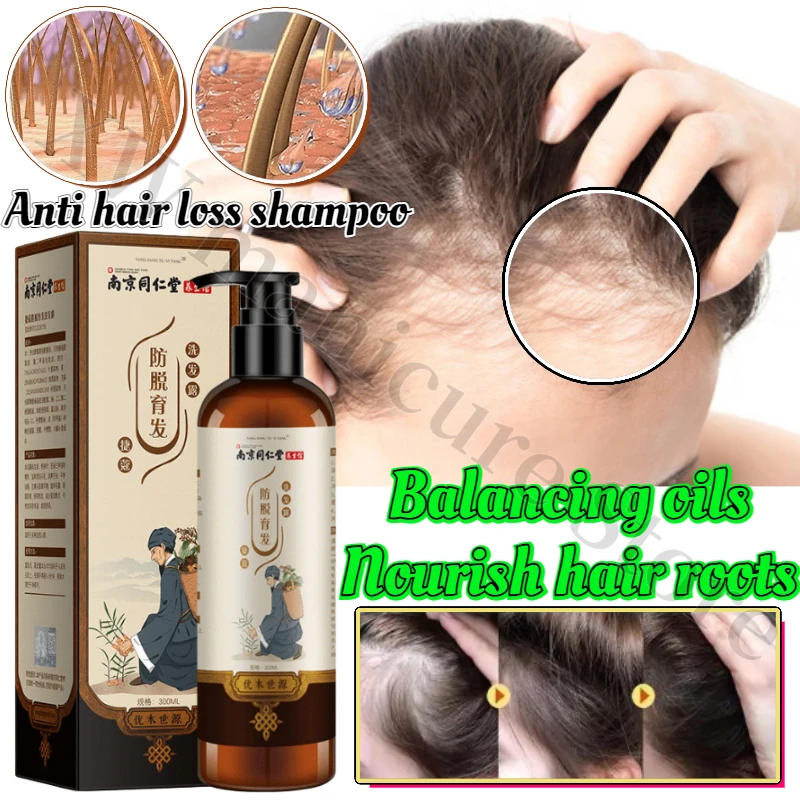
Identifying Itch-Inducing Plants in the Wild
Recognizing itch-inducing plants is essential for avoiding contact. Here are some key features to look out for:
Poison Ivy, Oak, and Sumac
These plants are often characterized by their leaves, which grow in clusters of three. Remember the old saying: “Leaves of three, let it be.” Poison ivy typically has shiny green leaves that turn red in autumn. Poison oak leaves are similar but have a more lobed, oak-like appearance. Poison sumac has 7-13 leaflets per stem and prefers wet, swampy areas.
Stinging Nettle
This plant has heart-shaped leaves with serrated edges and tiny, hair-like structures on the stems and leaves. These hairs contain the irritating compounds that cause the characteristic stinging sensation.
Giant Hogweed
This large plant can grow up to 14 feet tall. It has large, deeply lobed leaves and clusters of white flowers that form an umbrella-like shape. The stem is often covered in purple blotches and coarse white hairs.
Can you identify itch-inducing plants by their flowers alone? While flowers can be helpful in identification, it’s important to consider the entire plant, including leaves, stems, and overall growth pattern. Relying solely on flowers may lead to misidentification, as many harmless plants have similar blooms.

Symptoms of Plant-Induced Skin Irritation
The symptoms of plant-induced skin irritation can vary depending on the specific plant and the individual’s sensitivity. Common symptoms include:
- Redness and swelling
- Itching and burning sensation
- Rash or hives
- Blisters or welts
- Pain or tenderness
- Warmth in the affected area
In some cases, more severe reactions can occur, such as difficulty breathing, fever, or widespread rash. These symptoms may indicate a more serious allergic reaction and require immediate medical attention.
Do symptoms appear immediately after contact with an itch-inducing plant? The onset of symptoms can vary. For some plants, like stinging nettles, the reaction is almost immediate. However, for others, such as poison ivy, symptoms may not appear for 12 to 72 hours after exposure. This delayed reaction can make it challenging to identify the source of the irritation.
Treatment Options for Plant-Induced Skin Irritation
If you come into contact with an itch-inducing plant, prompt action can help minimize discomfort and prevent the spread of irritants. Here are some treatment options:
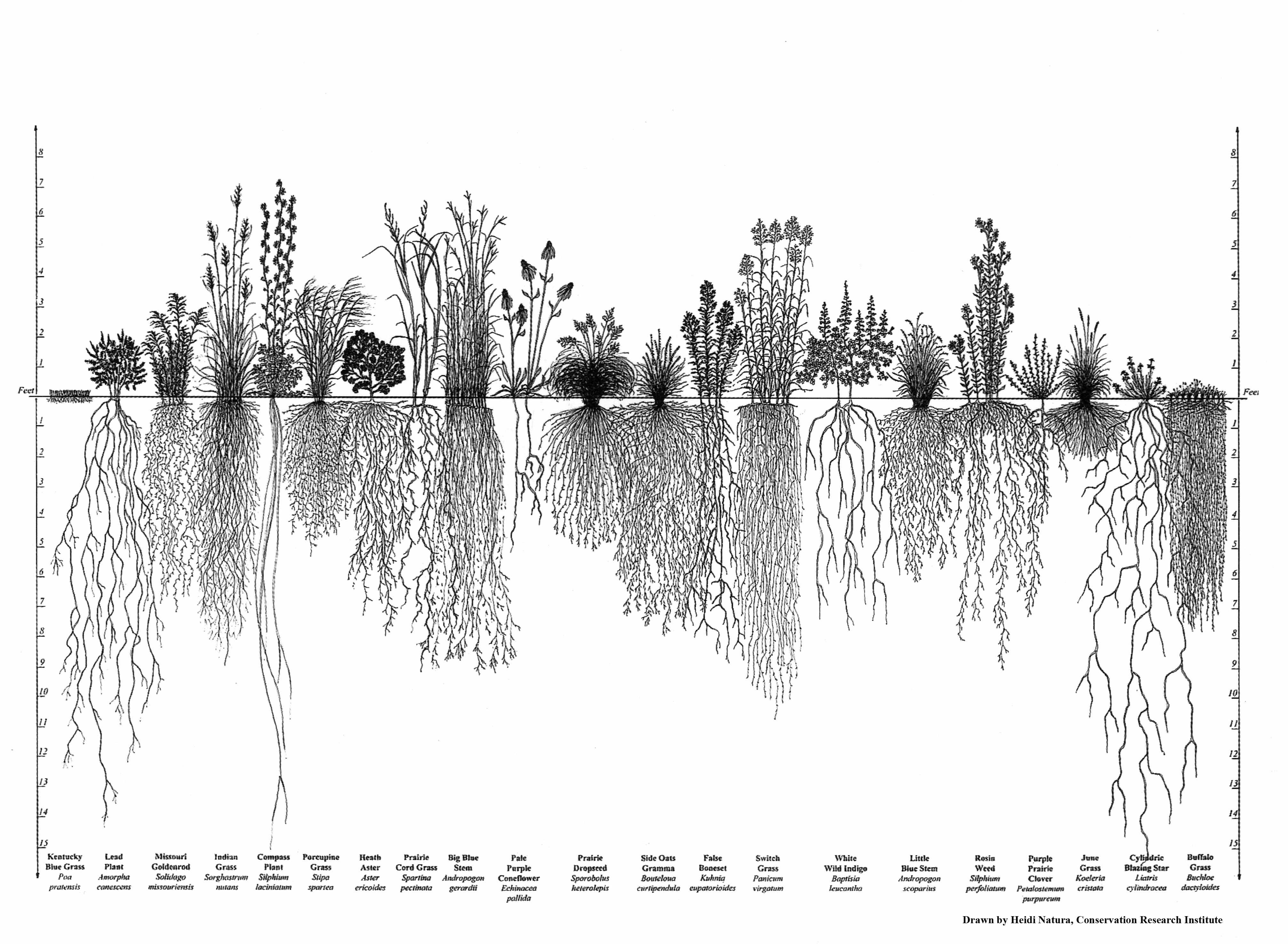
- Rinse the affected area: Immediately wash the skin with lukewarm water and mild soap to remove any remaining plant oils or irritants.
- Apply cool compresses: This can help reduce inflammation and soothe the skin.
- Use over-the-counter treatments: Calamine lotion, hydrocortisone cream, or oral antihistamines can help relieve itching and inflammation.
- Take an oatmeal bath: Colloidal oatmeal can help soothe irritated skin.
- Avoid scratching: This can lead to skin damage and potential infection.
For severe reactions or if symptoms persist, consult a healthcare professional. They may prescribe stronger treatments such as oral corticosteroids or topical prescription medications.
Is it safe to use home remedies for treating plant-induced skin irritation? While many home remedies can provide relief, it’s important to use caution. Some popular remedies, like applying mud or certain plant leaves, may introduce bacteria or cause further irritation. Stick to proven treatments and consult a healthcare professional if you’re unsure.

Preventing Contact with Itch-Inducing Plants
Prevention is key when it comes to avoiding the discomfort of plant-induced skin irritation. Here are some strategies to minimize your risk:
- Learn to identify common itch-inducing plants in your area
- Wear protective clothing, including long sleeves, pants, and closed-toe shoes when in wooded or overgrown areas
- Use barrier creams or lotions designed to protect against plant oils
- Stay on marked trails when hiking or exploring nature
- Keep pets from running through areas with known itch-inducing plants, as they can carry the oils on their fur
- Remove any suspected itch-inducing plants from your yard (wear protective gear when doing so)
Remember, even if you’ve never had a reaction to a particular plant before, sensitivity can develop over time. It’s always best to err on the side of caution.
Can you become immune to the effects of itch-inducing plants over time? Contrary to popular belief, repeated exposure to plants like poison ivy doesn’t lead to immunity. In fact, sensitivity often increases with each exposure, potentially leading to more severe reactions in the future.

The Science Behind Plant-Induced Skin Irritation
Understanding the mechanisms behind plant-induced skin irritation can help us better prevent and treat these reactions. The irritation is typically caused by one of two main processes:
1. Allergic Contact Dermatitis
This is the mechanism behind reactions to plants like poison ivy, oak, and sumac. The plant’s urushiol oil triggers an immune response in the body, leading to inflammation and the characteristic itchy rash. This reaction typically occurs 24-72 hours after exposure.
2. Mechanical or Chemical Irritation
Some plants, like stinging nettles, cause immediate irritation through tiny needle-like structures that inject irritating chemicals into the skin. Others, like giant hogweed, contain phototoxic substances that react with sunlight to cause severe burns.
The severity of the reaction can depend on various factors, including the amount of exposure, the individual’s sensitivity, and the specific plant involved.
Why do some people seem more susceptible to plant-induced skin irritation than others? Sensitivity to plant irritants can vary widely between individuals due to genetic factors, previous exposures, and overall health status. Some people may have no reaction to a plant that causes severe symptoms in others.

Itch-Inducing Plants and Ecosystem Balance
While itch-inducing plants can be a nuisance for humans, they play important roles in their native ecosystems. Understanding these roles can help us appreciate the complexity of nature and the importance of biodiversity:
- Food source: Many animals, including deer and birds, eat parts of plants that are irritating to humans without ill effects.
- Habitat: These plants provide shelter and nesting sites for various wildlife species.
- Soil conservation: Plants like stinging nettles can help prevent soil erosion in disturbed areas.
- Medicinal uses: Some itch-inducing plants have traditional medicinal uses when properly prepared.
- Ecological indicators: The presence of certain plants can indicate specific soil conditions or ecological health.
It’s important to manage these plants responsibly, especially in areas frequented by humans, while also respecting their role in natural ecosystems.
Should itch-inducing plants be completely eradicated from public areas? While it may be tempting to remove all potential hazards, complete eradication of native plants can disrupt local ecosystems. A balanced approach involving education, clearly marked areas, and selective management is often more beneficial in the long run.

Global Distribution and Climate Change Impact on Itch-Inducing Plants
The distribution of itch-inducing plants is not uniform across the globe, and climate change is altering these patterns. Here’s what you need to know:
Current Distribution
Itch-inducing plants are found on every continent except Antarctica. However, their prevalence and species vary by region:
- North America: Home to poison ivy, oak, and sumac
- Europe: Stinging nettles are common
- Australia: Gympie gympie tree is notorious for its painful sting
- Asia: Tree of heaven and lacquer tree can cause reactions
- South America: Brazilian fire tree is a known irritant
- Africa: Poison arrow trees are found in some regions
Climate Change Effects
Climate change is influencing the distribution and potency of itch-inducing plants:
- Range expansion: Some plants are moving into new areas as temperatures change.
- Increased growth: Higher CO2 levels can lead to more robust plant growth.
- Potency changes: Some studies suggest climate change may increase the potency of irritants in certain plants.
- Seasonal shifts: Changes in growing seasons may alter when people are most likely to encounter these plants.
How is climate change specifically affecting poison ivy? Research indicates that poison ivy is thriving in higher CO2 environments, growing larger and producing more potent urushiol. This could lead to more frequent and severe reactions in the future.

Itch-Inducing Plants in Popular Culture and History
Itch-inducing plants have left their mark on human culture and history in various ways:
Literature and Folklore
Many cultures have stories and myths about these plants. For example, Native American folklore often includes tales about the origins of poison ivy and its effects.
Historical Uses
Despite their irritating properties, some of these plants have been used historically for various purposes:
- Medicinal: Stinging nettles have been used to treat arthritis and allergies.
- Warfare: Some cultures used irritant plants in weapons or traps.
- Fiber: Nettles have been used to make cloth and rope.
Modern References
Itch-inducing plants often appear in modern media, from cartoons showing characters stumbling into poison ivy to survival shows demonstrating how to avoid these plants in the wild.
Have itch-inducing plants ever been used as a form of punishment or torture? While there are historical accounts of irritant plants being used in punishments, these practices are considered inhumane and are not condoned in modern society. Today, the focus is on education and prevention to avoid accidental contact with these plants.

Technological Advancements in Dealing with Itch-Inducing Plants
As our understanding of itch-inducing plants grows, so do the technologies and methods for dealing with them. Here are some recent advancements:
Identification Apps
Smartphone apps using image recognition technology can help users identify potentially harmful plants in real-time. These apps often provide information on the plant’s characteristics, potential effects, and how to avoid them.
Improved Protective Gear
New fabrics and designs in outdoor clothing offer better protection against plant irritants while maintaining comfort and breathability.
Advanced Treatments
Research into the mechanisms of plant-induced irritation has led to more targeted treatments, including:
- Enzymatic solutions that break down plant oils
- Nanoparticle-based creams for better absorption and efficacy
- Immunotherapy approaches for highly sensitive individuals
Environmental Management
New techniques for managing itch-inducing plants in public areas include:
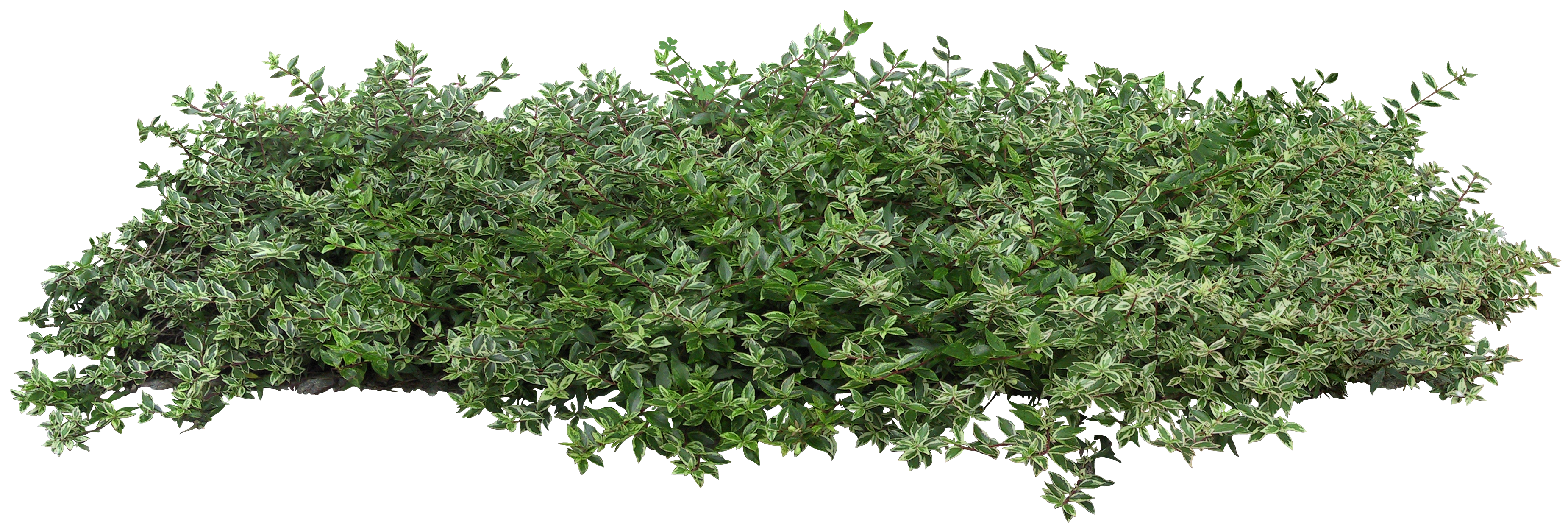
- Precision herbicide application to minimize environmental impact
- Biological control methods using natural predators or competitors
- Advanced mapping and monitoring systems to track plant populations
Are there any promising developments in creating a vaccine against poison ivy reactions? While there is ongoing research into developing a vaccine or prophylactic treatment for poison ivy sensitivity, no such product is currently available. The complex nature of the immune response to urushiol makes this a challenging area of study.
Plants that can make you itch
Diseases & conditions
-
Coronavirus Resource Center
-
Acne
-
Eczema
-
Hair loss
-
Psoriasis
-
Rosacea
-
Skin cancer
-
A to Z diseases
-
A to Z videos
- DIY acne treatment
- How dermatologists treat
- Skin care: Acne-prone skin
- Causes
- Is it really acne?
- Types & treatments
- Childhood eczema
- Adult eczema
- Insider secrets
- Types of hair loss
- Treatment for hair loss
- Causes of hair loss
- Hair care matters
- Insider secrets
- What is psoriasis
- Diagnosis & treatment
- Skin, hair & nail care
- Triggers
- Insider secrets
- What is rosacea
- Treatment
- Skin care & triggers
- Insider secrets
- Types and treatment
- Find skin cancer
- Prevent skin cancer
- Raise awareness
- Español
Featured
Reduce summertime rosacea flare-ups
The sun, heat, and humidity can all trigger rosacea and lead to flare-ups. Find out how you can enjoy summer while reducing flare-ups.
Find out how you can enjoy summer while reducing flare-ups.
JAK inhibitors: A newer type of medication
JAK inhibitors are helping patients with alopecia areata, eczema/atopic dermatitis, psoriasis, and vitiligo. Here’s what you need to know.
Everyday care
-
Skin care basics
-
Skin care secrets
-
Injured skin
-
Itchy skin
-
Sun protection
-
Hair & scalp care
-
Nail care secrets
- Basic skin care
- Dry, oily skin
- Hair removal
- Tattoos and piercings
- Anti-aging skin care
- For your face
- For your skin routine
- Preventing skin problems
- Bites & stings
- Burns, cuts, & other wounds
- Itch relief
- Poison ivy, oak & sumac
- Rashes
- Shade, clothing, and sunscreen
- Sun damage and your skin
- Aprenda a proteger su piel del sol
- Your hair
- Your scalp
- Nail care basics
- Manicures & pedicures
Featured
Practice Safe Sun
Everyone’s at risk for skin cancer. These dermatologists’ tips tell you how to protect your skin.
These dermatologists’ tips tell you how to protect your skin.
Relieve uncontrollably itchy skin
Find out what may be causing the itch and what can bring relief.
Darker Skin Tones
-
Skin care secrets
-
Hair care
-
Hair loss
-
Diseases & Conditions
- Acne
- Dark spots
- Dry skin
- Light spots
- Razor bumps
- Caring for Black hair
- Scalp psoriasis
- Weaves & extensions
- Central centrifugal cicatricial alopecia
- Frontal fibrosing alopecia
- Hairstyles that pull can cause hair loss
- Acanthosis nigricans
- Acne keloidalis nuchae
- Hidradenitis suppurativa
- Keloid scars
- Lupus and your skin
- Sarcoidosis and your skin
- Skin cancer
- Vitiligo
- More diseases & conditions
Featured
Fade dark spots
Find out why dark spots appear and what can fade them.
Untreatable razor bumps or acne?
If you have what feels like razor bumps or acne on the back of your neck or scalp, you may have acne keloidalis nuchae. Find out what can help.
Cosmetic treatments
-
Your safety
-
Age spots & dark marks
-
Cellulite & fat removal
-
Hair removal
-
Scars & stretch marks
-
Wrinkles
-
Younger-looking skin
Featured
Laser hair removal
You can expect permanent results in all but one area. Do you know which one?
Do you know which one?
Scar treatment
If you want to diminish a noticeable scar, know these 10 things before having laser treatment.
Botox
It can smooth out deep wrinkles and lines, but the results aren’t permanent. Here’s how long botox tends to last.
Public health programs
-
Skin cancer awareness
-
Free skin cancer screenings
-
Kids’ camp
-
Good Skin Knowledge
-
Shade Structure grants
-
Skin Cancer, Take a Hike!™
-
Awareness campaigns
-
Flyers & posters
-
Get involved
- Lesson plans and activities
- Community grants
Featured
Free materials to help raise skin cancer awareness
Use these professionally produced online infographics, posters, and videos to help others find and prevent skin cancer.
Dermatologist-approved lesson plans, activities you can use
Free to everyone, these materials teach young people about common skin conditions, which can prevent misunderstanding and bullying.
Find a dermatologist
-
Find a dermatologist
-
What is a dermatologist?
-
FAAD: What it means
-
How to select a dermatologist
-
Your digital health
-
Prior authorization
-
Dermatologists team up to improve patient care
- Finding accurate health information
- Health apps
- Wearable medical devices
- Telemedicine
- Protect your information
Featured
Find a Dermatologist
You can search by location, condition, and procedure to find the dermatologist that’s right for you.
What is a dermatologist?
A dermatologist is a medical doctor who specializes in treating the skin, hair, and nails. Dermatologists care for people of all ages.
Poison Ivy, Poison Oak, and 7 Other Plants That Can Give You a Rash
Poison ivy is found across the United States. You can come into contact with it while hiking in the woods, but it grows virtually everywhere — along roadsides, on fences, in backyards. Poison ivy leaves grow in clusters of three on vines that can grow up into trees or trail along the ground. Every part of the plant contains the compound called urushiol, which causes poison ivy’s notorious rash — the vine, the roots, the leaves, the flowers, and the berries.
A poison ivy rash typically appears a few days after exposure, and can even take a week or two if this is your first time in contact with the plant. When it does, you’ll know it: You’ll see very red skin, swelling, and blisters, and you’ll feel a serious itch. A strong corticosteroid skin cream or ointment can help with the inflammation. Your doctor may prescribe other medication if the inflammation is severe, to either suppress your immune system or to help further reduce the reaction. Anti-itch topical creams may also help.
A strong corticosteroid skin cream or ointment can help with the inflammation. Your doctor may prescribe other medication if the inflammation is severe, to either suppress your immune system or to help further reduce the reaction. Anti-itch topical creams may also help.
RELATED: How to Treat Poison Ivy and Reduce Discomfort
2. Poison Oak: Not Related to Oak Trees
Stinging nettle is the best-known member of the nettle family. It grows throughout the United States as well as in Europe, Asia, and North Africa. The plant tends to grow in dense patches near streams, along hiking trails, in ditches, and around farmland, often where the earth has been disturbed.
The stems of stinging nettle are singular, with few branches, and can grow 6 to 8 feet tall. The stems may be green or purple and may or may not have stinging hairs. The petioles (stem parts of the leaf) and undersides of the leaves also have stinging hairs.
The leaves of stinging nettle are longer than they are wide, and dark green, 2 to 4 inches long, with a tapered tip. Clusters of whitish flowers grow at the base of each pair of leaves along the stem.
Clusters of whitish flowers grow at the base of each pair of leaves along the stem.
Coming into contact with stinging nettle causes a sharp, painful sting, followed by a burning sensation and sometimes itching. The irritation can linger for several hours and cause hives near the site of contact which can last up to 24 hours.
Stinging nettle is sometimes gathered for food or to make into tea. It has long been a folk remedy for joint pain, eczema, arthritis, gout, and anemia. Cooking deactivates the stinging properties of stinging nettle.
6. Baby’s Breath: Irritating When Dried
If you’ve ever gotten roses from a florist, chances are they were clustered with sprays of tiny white or pink flowers known as baby’s breath. You might also see baby’s breath in cultivated perennial gardens.
Baby’s breath generally isn’t an irritant while it’s still alive, but when it’s dried, it can irritate the eyes, nose, and sinuses, as well as the skin. It can additionally cause asthma in people who touch it frequently, such as floral industry employees.
The skin irritation caused by baby’s breath is usually minor and temporary.
People who have become sensitized to baby’s breath and are having asthma reactions ideally should stop handling it.
Interestingly, double-flower varieties of baby’s breath tend to cause fewer reactions than single-flower varieties, so if you’re planting it in your garden or have a choice when ordering a bouquet, go for the double-flower option.
7. Leadwort: Look but Don’t Touch
Giant hogweed is an invasive plant in Europe and North America and, according to the New York Department of Environmental Conservation, a “federally listed noxious weed” in the United States.
Contact with the sap of giant hogweed can cause serious skin and eye irritation, blistering, scarring, and even blindness if the sap gets in the eye. The skin rash may look like a second-degree burn and can leave you with long-lasting scars and sensitivity to sunlight.
Giant hogweed sap is phototoxic, which means it requires exposure to ultraviolet light to cause a reaction.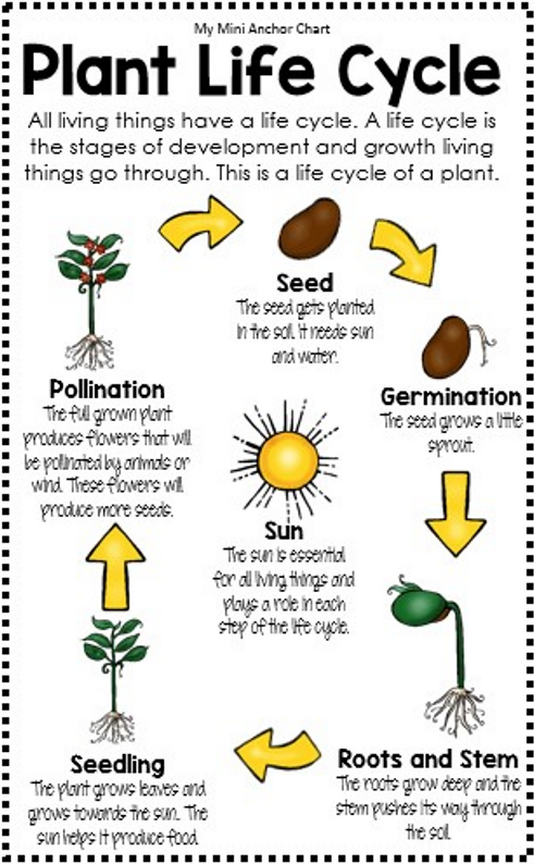 If you touch giant hogweed — or think you might have — keep the exposed area away from sunlight for 48 hours, and wash it with soap and cold water as soon as possible. If you get sap in your eyes, rinse them with water and wear sunglasses. See a physician if you have a reaction.
If you touch giant hogweed — or think you might have — keep the exposed area away from sunlight for 48 hours, and wash it with soap and cold water as soon as possible. If you get sap in your eyes, rinse them with water and wear sunglasses. See a physician if you have a reaction.
You can recognize giant hogweed in part by its size: It can grow to 14 feet high or higher and has hollow, rigid stems 2 to 4 inches in diameter. Its deeply lobed, compound leaves can grow up to 5 feet across, and its white, umbrella-shaped flower heads, can be up to 2.5 feet across. The stems of giant hogweed are green with purple splotches and coarse, white hairs.
6 Ways to Soothe Psoriasis in the Summer
Psoriasis symptoms can improve in summer, but to prevent seasonal flare-ups, you need to be smart about sunscreen and moisturizer. Here’s a guide.
By Mikel Theobald
The Best Skin-Care Ingredients and Products to Shield Against Environmental Damage
UV rays, blue light, and air pollution can cause fine lines and wrinkles, sagging, and dark spots. Fortunately, certain skin-care ingredients can help…
Fortunately, certain skin-care ingredients can help…
By Jessica Migala
20 Ways to Preserve — and Boost — Collagen in Your Face
Try these skin-care products, procedures, and habits for smoother, plumper, and healthier-looking skin today. Each of these recommendations is supported…
By Jessica Migala
What Is Face Yoga? Plus, 5 Exercises to Try at Home
Face yoga may help reduce premature signs of skin aging, such as fine lines and wrinkles. Here’s a look at the limited research behind this approach and…
By Moira Lawler
What Is Poison Ivy? Symptoms, Causes, Diagnosis, Treatment, and Prevention
Coming into contact with poison ivy may seem inevitable when you spend time outdoors, but by taking quick action, you can minimize your exposure and the…
By Quinn Phillips
8 Tips for Getting Rid of Poison Ivy on Your Property
Eradicating poison ivy requires a careful approach, whether you have a backyard to clear or a larger area. Goats are an option for campuses and construction…
Goats are an option for campuses and construction…
By Christina Frank
How to Treat Poison Ivy and Reduce Discomfort
Over-the-counter products, cold compresses, and soothing baths are usually enough to treat poison ivy. But if you have a severe reaction, see a doctor…
By Quinn Phillips
What Does Poison Ivy Look Like?
Poison ivy causes millions of itchy rashes every year, yet many cannot identify this common plant. Learn what poison ivy looks like in spring, summer,…
By Ingrid Strauch
See All
Scabies mite | directory Pesticides.ru
Summary data | |
| Fertility (pcs) | 20-25 |
| Generations per year | Set |
| Egg (mm) | 0.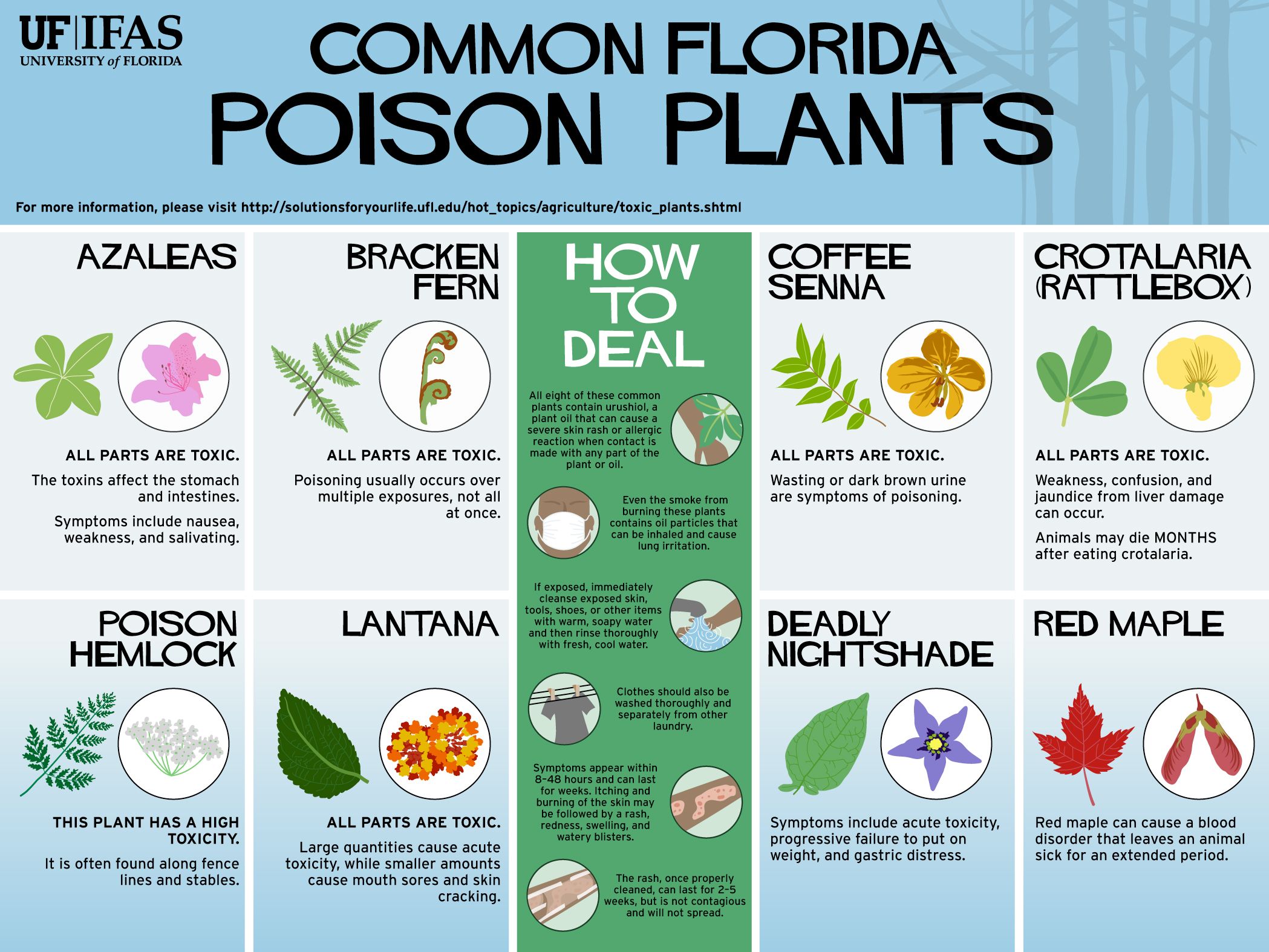 15×0.08 15×0.08 |
| Imago (mm) | 0.2-0.5 |
| Female (mm) | 0.2-0.5 |
| Male (mm) | 0.2-0.5 |
Morphology
Imago – small tick. Length – 0.2-0.5 mm, width – up to 0.18-0.38 mm. The body is round or oval, slightly flattened in the dorsoventral direction, dirty gray. [1] Integument light, with parallel shading. The dorsal side has triangular scales and several pairs of setae. [4]
The proterosome bears the gnathosoma and two pairs of forward legs. The gnathosoma (oral apparatus of the gnawing type) is short, assembled into a horseshoe-shaped proboscis. [1] Very short legs. The legs of the first and second pairs end in suckers located on long and thin stalks (ambulacras). [4] Hysterosoma bears the third and fourth pairs of legs. They are directed backwards. [1] The third and fourth pair of feet do not have suction cups. In their place are thick and long hair-like bristles. [4] Five-segmented legs. [1] Anus at the posterior end of the body. The eyes are missing. [4] Breathing takes place through thin chitinous covers. [1]
In their place are thick and long hair-like bristles. [4] Five-segmented legs. [1] Anus at the posterior end of the body. The eyes are missing. [4] Breathing takes place through thin chitinous covers. [1]
Sexual dimorphism
Male . Less female. The external reproductive apparatus is located between the bases of the fourth pair of legs. Ambulacras are located on the first, second and fourth pairs of legs. There are no copulatory suckers. [1]
Female larger than male. Ambulacras on the first and second pairs of limbs. [1]
Egg oval. The color is grey-white. Size – 0.15 x 0.08 mm. [1]
Larva six-legged. [1]
Developmental phenology (in days) | |
| Transformation | Incomplete |
| Full cycle | 10-14 |
| Female | Up to 2 months |
Development
Imago develops only on the human body. Outside the human body, on linen, furnishings at air temperatures up to +15 ° C, scabies mites live for about three weeks, when the temperature rises to +20 ° C – no more than three days, and at + 50–60 ° C – no more than an hour . The female gets on the skin and moves along its surface with the help of suction cups of two front pairs of legs. It is introduced into the stratum corneum with the help of chelicerae with the participation of the terminal spines of the two front pairs of legs. Immersion is facilitated by the release of oral secretions. The female makes a passage in the lower part of the stratum corneum of the epidermis and feeds on the granular layer of the epidermis. As the passage forms behind the female, the stratum corneum is restored. At the end of the course, papules or vesicles appear, under them there are ticks. Every 1–2 cm, the female gnaws holes in the epidermis through which air enters the passages. [4]
Outside the human body, on linen, furnishings at air temperatures up to +15 ° C, scabies mites live for about three weeks, when the temperature rises to +20 ° C – no more than three days, and at + 50–60 ° C – no more than an hour . The female gets on the skin and moves along its surface with the help of suction cups of two front pairs of legs. It is introduced into the stratum corneum with the help of chelicerae with the participation of the terminal spines of the two front pairs of legs. Immersion is facilitated by the release of oral secretions. The female makes a passage in the lower part of the stratum corneum of the epidermis and feeds on the granular layer of the epidermis. As the passage forms behind the female, the stratum corneum is restored. At the end of the course, papules or vesicles appear, under them there are ticks. Every 1–2 cm, the female gnaws holes in the epidermis through which air enters the passages. [4]
Mating period . After leaving the epidermal passage to the surface of the skin, adult males copulate with telenymphs. [1] Females lay 2–9 eggs per day in burrows, about 20–25 eggs in total. Eggs are laid sequentially. [4]
[1] Females lay 2–9 eggs per day in burrows, about 20–25 eggs in total. Eggs are laid sequentially. [4]
The egg develops in the lower part of the stratum corneum of the epidermis. [4]
Larva. Nymph I (protonymph). Nymph II (teleonymph) . The larvae hatch from the eggs, emerge through the cover of the passage, and burrow into the skin. Metamorphosis from larva to adult proceeds in vesicles, papules, and partly in thin passages and externally unaltered skin. The larvae and nymphs may be in the same passages as the females, or they may drill independent passages. [4]
Imago . Males and telenymphs come to the surface of the skin, copulate, after which the males die, and the telenymphs penetrate the skin, turn into adult females and start laying eggs. [1] The development cycle from egg to adult lasts up to 10–14 days. In three months, up to 150 million individuals can develop on the human body. Sexually mature females live up to two months. [4]
In three months, up to 150 million individuals can develop on the human body. Sexually mature females live up to two months. [4]
Abiotic factors . Survival of the scabies mite outside the host at room temperature and 60% humidity is about 5-6 days. At the same time, invasiveness (that is, the ability to penetrate the skin) is lost after 2 days. Reducing the content of moisture vapor in the air to 35% leads to the death of the parasite within a day. Boiling kills ticks instantly, heating up to 60 degrees – in 1 hour. [3]
Warning: Invalid argument supplied for foreach() in /home/v/vf0lisx2/pesticidy.ru/public_html/ps-content/all/depend_ClosePosition.php on line 6
Morphologically related species The described species is close to many species of the family of scabies (itching) Sarcoptidae (Acaridae), which parasitize many domestic and wild animals
[2] and cause sarcoptoidosis. Including Sarcortes suis – in pigs, Sarcortes bovis – in cattle, Sarcortes equi – in horses, Sarcortes ovis – in sheep, Sarcortes sargae – in goats, Sarcortes cameli – in camels, Sarcortes tarandi-rangiferi – in reindeer, Sarcortes cuniculi – in rabbits, Sarcortes canis – in dogs.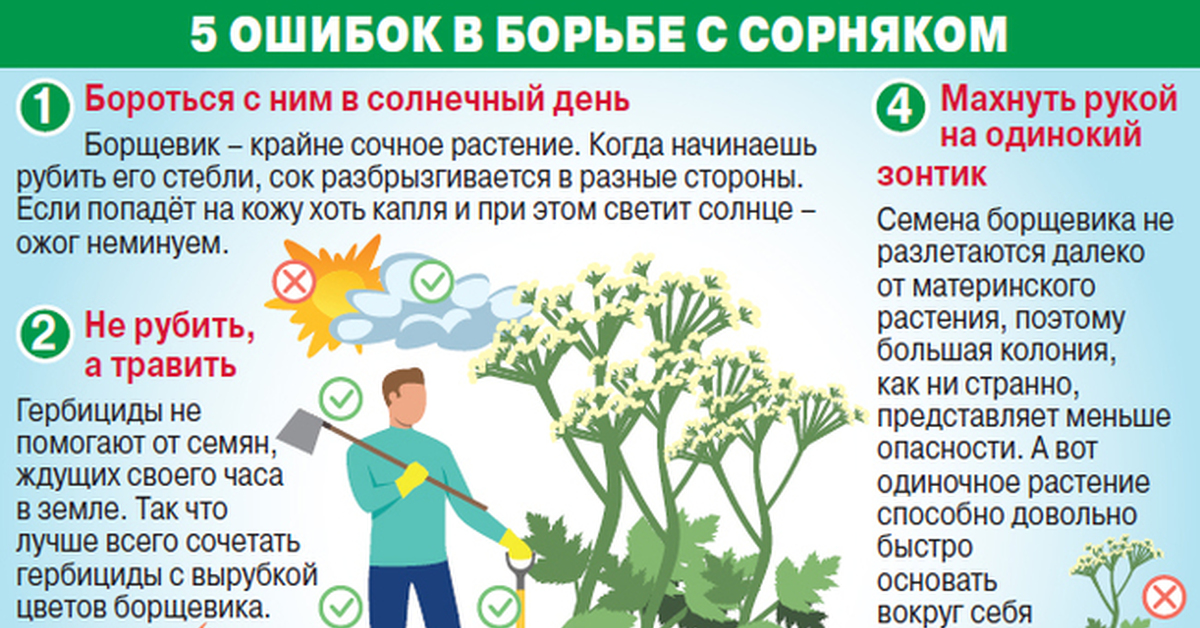 [1]
[1]
In addition to the described species, scabies mites and skin beetles of the family Psoroptidae are often found parasitizing under epidermal scales in domestic and wild animals and similar in morphology to adults with the scabies mite (Sarcortes scabiei). [2]
Geographic distribution
The scabies mite is distributed by man throughout the world. [2]
Harmfulness
The scabies mite develops only on humans, is the causative agent of scabies (sarcoptoidosis), parasitizing inside the skin. [1]
On the 7th–10th day after infection, rashes appear in the interdigital folds, on the lateral surfaces of the fingers, flexion surfaces of the hands, and on the trunk in the form of small nodules, vesicles and raised straight or curved stripes up to 1 cm long (scabies ). Patients are disturbed by severe itching, especially at night and in heat. Often, a purulent lesion of the skin joins the disease, which is a consequence of the ingress of microbes into the scratches. [4]
[4]
Control measures
Preventive measures
- Personal hygiene.
- Cleanliness of dwellings, linen.
- Timely treatment of sick people and animals.
- Systematic medical examinations of organized groups. [4]
Extermination measures
Identification and treatment of patients . Anti-scabious (anti-scabies drugs) work better when they are used at night, since it is at night that the mites are most active and come to the surface of the skin or move closer to it. For treatment, sulfuric ointment (currently rarely used), preparations based on benzyl benzoate, permethrin, and other chemicals, often in combination with synergists, can be used. Abroad, drugs based on thiabendazole, monosulfiram, diethylcarbamazine, etc. have been used or are being used. Treatment of several patients from one focus is carried out simultaneously to avoid re-infection; in parallel, processing of things and premises is carried out. [3]
[3]
Carrying out pest control measures in the premises . In dwellings and other premises, tick control is carried out by wet and aerosol pest control. Upholstered furniture and things that cannot be washed are sprayed with acaricides.
Processing clothes and laundry . Washing is carried out in hot water with powder and ironing of clothes, hats, textiles and other fabric products. [2]
The article was compiled using the following materials:
References:
1.
Akbaev M.Sh., Vodyanov A. A., Kosminkov N. E. Parasitology and invasion diseases of animals. – M.: Kolos, 1998. – 743 p. (Textbooks and teaching aids for students of higher educational institutions)
2.
Beklemishev V.N. Key to arthropods harmful to human health. – M.: MEDGIZ, 1958. – 420 p.
3.
Zavyalov A.I., Orkin V.F., Marchenko V.M., Plyachenko D.A. DERMATOZOONOSES (scabies, pediculosis). Tutorial.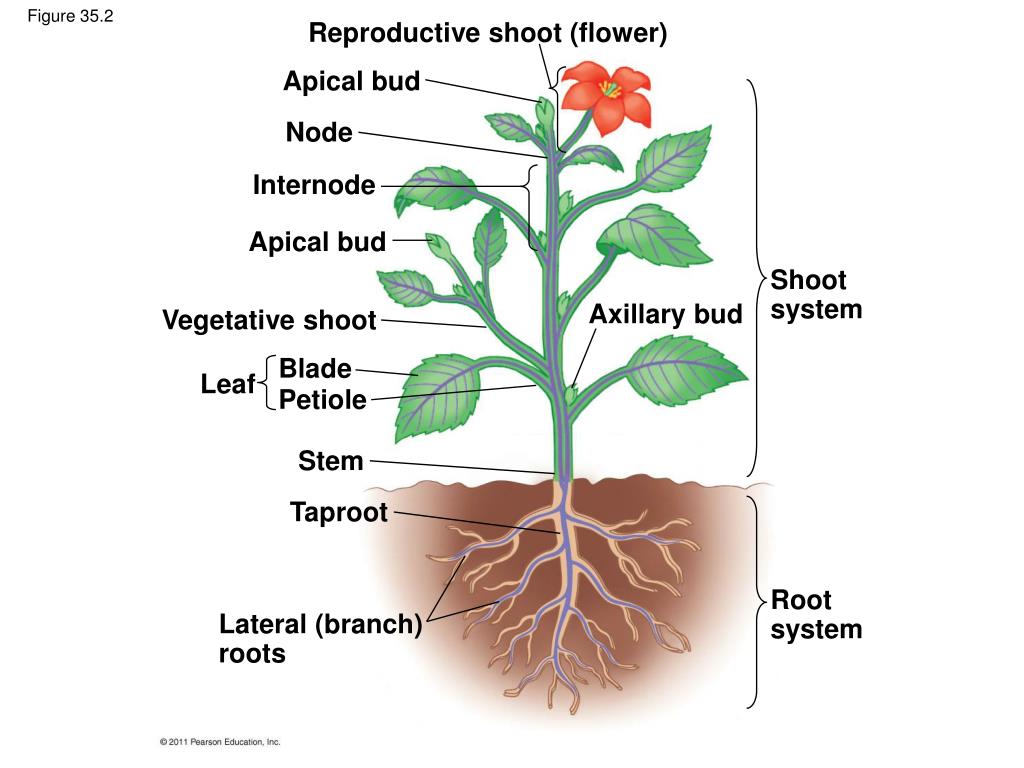 – Saratov, publishing house of the Saratov Medical University, 2005. -52 p.
– Saratov, publishing house of the Saratov Medical University, 2005. -52 p.
4.
Tarasov V.V. Medical entomology. M.: Publishing House of Moscow State University, 1996 – 353 p.
Images (remastered):
5.
Sarcoptes scabiei, by AJ Cann, licensed under CC BY-SA
CollapseList of all sources
Scabies – symptoms, causes and treatment
This disease is treated by a Dermatologist
- What is it?
- About disease
- Types and varieties of scabies
- Symptoms of scabies
- Causes of scabies
- Diagnostics
- Expert opinion
- Treatment of human scabies
- Prophylaxis
- Q&A
About disease
What does scabies mean? The disease has been described since ancient times. The first description is over 4000 years old, and it was made by Chinese healers. But only in 1834 the causative agent was identified – the scabies mite. This was done by the French scientist Rinucci.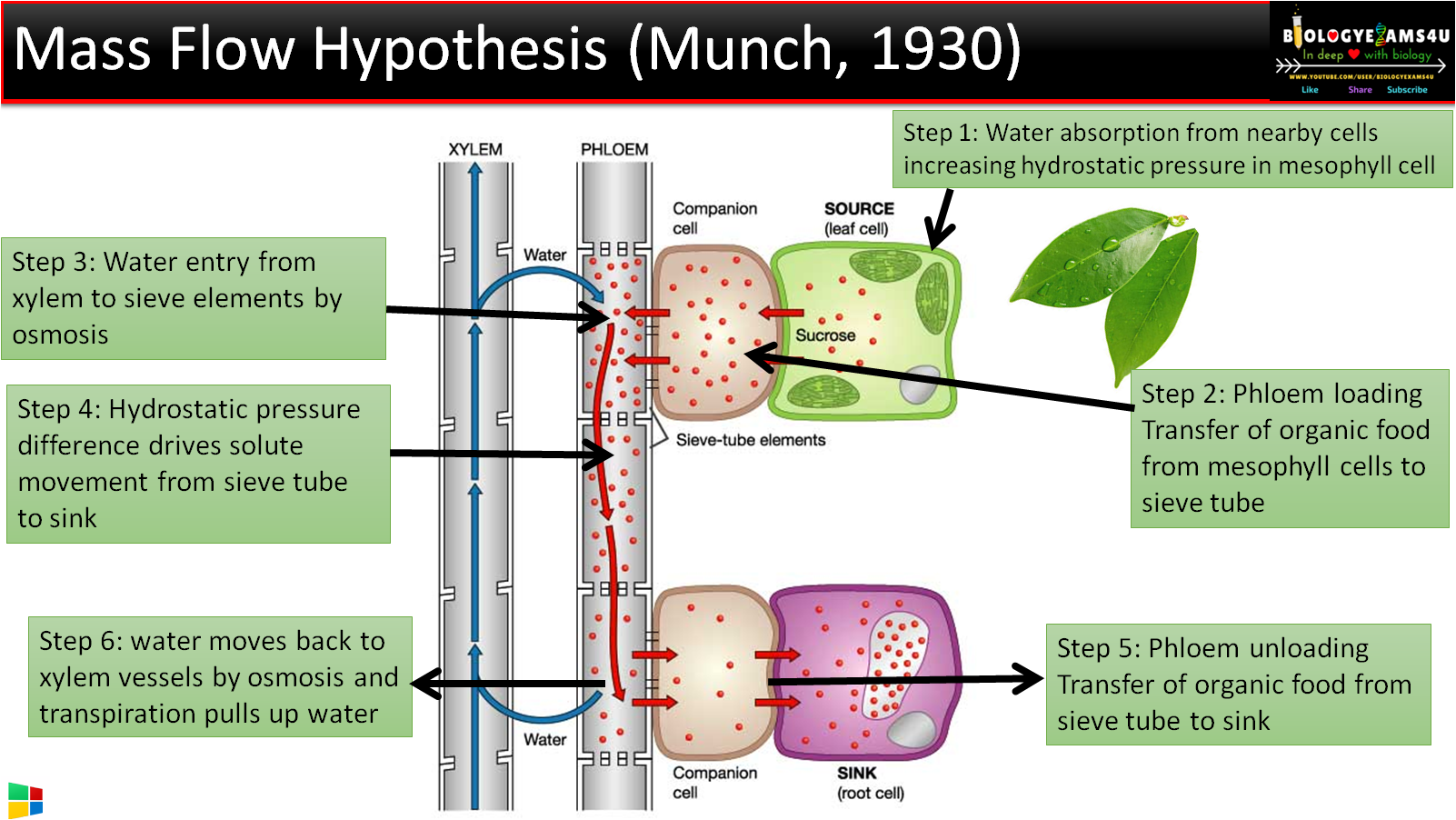
The main route of transmission of the disease is contact (implemented by direct contact with the skin of an infected person or through household items). If earlier the disease was common among people with low social status, now scabies of clean people is becoming more common. The likelihood of contracting scabies mites is increased in crowded places: school groups, kindergartens, army barracks, additional education sections, etc.
Symptoms of the disease are directly related to the vital activity of female ticks, which are localized in the epidermal layers. After mating, females drill new passages in the surface layers of the skin (scabies passages) and lay eggs as they move. After about 3-4 days, the eggs transform into larvae that are capable of active movement. Female scabies mites are almost twice as large as males.
Scabies mites mate with each other on the surface of the skin. After fertilization, only females survive – males soon die. Female ticks live for about 1. 5-2 months; during the life cycle, one individual lays about fifty eggs. The scabies mite is always located at the anterior end of the scabies passage, then the eggs follow, then the larvae, and even further the skins left after the molting of the larvae. The development of a tick from an egg to a mature individual takes about 4 days. After maturation, the larva leaves the course, enters the surface of the skin, and then re-embeds inside the epithelium. Pimples and small bubbles form at the injection sites.
5-2 months; during the life cycle, one individual lays about fifty eggs. The scabies mite is always located at the anterior end of the scabies passage, then the eggs follow, then the larvae, and even further the skins left after the molting of the larvae. The development of a tick from an egg to a mature individual takes about 4 days. After maturation, the larva leaves the course, enters the surface of the skin, and then re-embeds inside the epithelium. Pimples and small bubbles form at the injection sites.
The intraepidermal movement of mites causes intense itching, which can sometimes become unbearable. Due to itching, scratching appears on the skin.
Progression of scabies mites under the layer of the epidermis causes intense, sometimes unbearable itching. Scratching itchy areas of the skin leads to scratching of the skin. These epithelial lesions are often infected with secondary pyogenic flora, which significantly aggravates the course of the disease (pyogenic complications).
Dermoscopy allows to detect objective signs of the disease. Microscopic examination is aimed at identifying scabies mites in the biomaterial.
Therapy of the disease is carried out with the help of anti-scabious drugs. After the treatment course, a thorough washing of the body and a complete change of underwear and bed linen are recommended. This helps to prevent re-infection with mites remaining on clothing.
Types and varieties of scabies
The following clinical varieties of scabies are distinguished:
- classical form;
- scabies without burrows;
- clean scabies;
- scabies erythroderma;
- Norwegian scabies;
- pseudosarcoptic mange;
- scabious lymphoplasia.
Each of these types of scabies has its own distinctive features, which can make differential diagnosis difficult.
- Scabies without burrows. The development of this form of the disease is due to the fact that infection occurs not by mature forms, but by larvae.
 First, single pimples and vesicles appear, which exist for 10-15 days after infection. Then the classical form of scabies develops with intraepidermal passages, which is associated with the development of adult sexually mature individuals.
First, single pimples and vesicles appear, which exist for 10-15 days after infection. Then the classical form of scabies develops with intraepidermal passages, which is associated with the development of adult sexually mature individuals. - Clean scabies. This variant of the disease is most often observed in people who carry out hygiene procedures too often. Symptoms are identical to the classical form, but the severity of manifestations is minimal.
- Postparasitic lymphoplasia. After the treatment, rashes in the form of postparasitic lymphoplasia may form. This condition is nodules around the remnants of the scabies mite, formed by lymphocytic cells. This form is characterized by very severe itching, which lasts from a crescent to six months after a full treatment.
- Norwegian scabies. This is a very contagious form that occurs with prolonged use of corticosteroids, cytostatics, as well as a disorder of peripheral sensory innervation, etc. This neglected form is characterized by redness of the skin, on which large pityriasis crusts of gray-yellow or black-brown color appear.
 The thickness of the crust can reach from a few millimeters to 2–3 cm. Such a massive layer makes movements in the affected area painful. A large population of mites is found in the intercortical and subcortical layers. From patients with the Norwegian form of the disease comes an unpleasant smell of fermented dough. This form has an unusual feature, which is that itching may be absent altogether or exist constantly. However, the symptoms are dominated by pain on movement.
The thickness of the crust can reach from a few millimeters to 2–3 cm. Such a massive layer makes movements in the affected area painful. A large population of mites is found in the intercortical and subcortical layers. From patients with the Norwegian form of the disease comes an unpleasant smell of fermented dough. This form has an unusual feature, which is that itching may be absent altogether or exist constantly. However, the symptoms are dominated by pain on movement. - Pseudosarcoptic mange. This type of scabies is associated with the fact that a person becomes infected with mites that parasitize animals. The disease can be transmitted from cats, dogs, rabbits, etc. The incubation period is quite short – only 2-3 days. These mites do not multiply on the surface, and only penetrate into the epidermis for a short distance, so there are no true scabies. Pinpoint pimples, dried blood crusts and traces of scratching appear in the injection zone. The disease resolves on its own after the natural death of ticks.
 Person-to-person transmission is not possible.
Person-to-person transmission is not possible.
Symptoms of scabies
The main symptoms of scabies are:
- intense itching that becomes especially pronounced at night;
- skin rashes that can affect different anatomical regions (with some exceptions).
The disease usually develops after a close skin, incl. sexual contact. The average incubation period is 1-2 weeks, but can vary widely (1-6 weeks).
An objective examination of the skin reveals pathognomonic rashes – scabies in places where the skin is thin and dry. In these areas, the female tick can easily gnaw through the epidermis and realize its reproductive function. Scabies most often come to light in the following places:
- skin in spaces between fingers;
- lateral and medial fingertips;
- inner wrist;
- external genitalia;
- areola on the mammary glands;
- lateral torso;
- buttocks.

The passages of the female scabies, as a rule, are not found in those areas where there are especially many sebaceous glands. This is due to the fact that sebum clogs the openings of the passages and thereby blocks the oxygen necessary for the life of the tick. Therefore, typical scabies elements are not found on the face, neck, head (in the hairline) and between the shoulder blades.
The intense itching that accompanies this disease leads to skin scratching. Therefore, during an objective examination, purulent crusts are also determined, bloody crusts often form on the elbows.
Causes of scabies
The direct cause of scabies is the scabies mite Sarcoptes scabiei. This parasite lives inside the epidermis, causing the appearance of typical moves.
Transmission of the pathogen occurs through direct contact between an infected and a healthy person, for example, by shaking hands, by holding contaminated handrails in public transport. The tick is also transmitted through bedding. Scabies is also considered a sexual infection, because. during intimacy, ticks can move to the body of the sexual partner and intrude into the epidermis.
Scabies is also considered a sexual infection, because. during intimacy, ticks can move to the body of the sexual partner and intrude into the epidermis.
Get advice
If you experience these symptoms, we recommend that you make an appointment with your doctor. Timely consultation will prevent negative consequences for your health.
To learn more about the disease, prices for treatment and sign up for a consultation with a specialist, you can call:
+7 (495) 292-39-72
Request a call back
Book online
Why SM-Clinic?
1
Treatment is carried out in accordance with clinical guidelines
2
Comprehensive assessment of the nature of the disease and treatment prognosis
3
Modern diagnostic equipment and own laboratory
4 900 07
High level of service and balanced pricing policy
Diagnosis
An important differential diagnostic sign of the disease is a nocturnal increase in skin itching. It is believed that it is at night that ticks are most active and secrete substances that irritate nerve receptors. Scabies itching is not stopped by antihistamines and corticosteroids. Its elimination is possible only after the death of the pathogen.
It is believed that it is at night that ticks are most active and secrete substances that irritate nerve receptors. Scabies itching is not stopped by antihistamines and corticosteroids. Its elimination is possible only after the death of the pathogen.
Identification of the causative agent in rashes (scabies) serves as an absolute diagnostic sign. For analysis, the pathogen is usually removed from the blind end of the passage formed by the tick with a thin needle and this material is subjected to microscopic examination. Sometimes the material is obtained by scraping to blood dew (after preliminary softening of the epidermis with a solution of lactic acid).
However, at present, according to modern medical recommendations, the diagnosis of scabies is established on the basis of the results of a dermatoscopy examination. With the help of a special device, it is possible to obtain an enlarged image of the skin and visualize characteristic passages. This method is non-invasive and painless, yet informative, quick and simple.
Expert opinion
Intense itching that accompanies typical forms of the disease causes a lot of discomfort for a person. Therefore, patients are interested in when it will pass. Usually, after the end of treatment, this symptom persists for 5–7 days, which is associated with irritation of the pain receptors of the epidermis, which are responsible for the development of a sensation of itching of the skin. Therefore, even after the end of antiparasitic therapy, it may be necessary to use local distractions and local anesthetics, etc.
Dimant Larisa Evgenievna
Dermatovenereologist, Ph.D.
Treatment of scabies in humans
Treatment of scabies in humans is carried out with anti-scabiosis drugs applied by rubbing into the skin. They allow you to destroy the causative agent of the disease, located intradermally. If there are no signs of purulent inflammation of the scratches, then before starting treatment it is recommended to rub the skin well with a washcloth under hot water. This will help to hit the superficial layer of the epithelium, and thereby facilitate the delivery of antiparasitic agents to the lesion.
This will help to hit the superficial layer of the epithelium, and thereby facilitate the delivery of antiparasitic agents to the lesion.
According to the clinical guidelines for scabies, anti-scabiosis therapy is carried out intermittently. Breaks fall on the 2nd and 3rd day. Their presence is explained by the fact that on the first day of treatment, mature females and males die, and on the fourth, the death of newly hatched larvae is achieved. Scabious eggs are resistant to pharmacological drugs, so there is no need to carry out anti-scabious therapy at the stage of eggs. If the itch moves are infected with pyogenic flora. Then a break on the 2-3rd day is an excellent opportunity to carry out antibacterial treatment.
Treatment of scabies during pregnancy involves the use of drugs that are not absorbed into the bloodstream and do not have a toxic effect on the fetus.
Prevention
Treatment of scabies cannot be complete without anti-epidemic measures. Careful processing of clothes, mattresses, blankets and other things where ticks can accumulate is recommended – boiling, airing, hot steam treatment, ironing with a hot iron are effective.
Careful processing of clothes, mattresses, blankets and other things where ticks can accumulate is recommended – boiling, airing, hot steam treatment, ironing with a hot iron are effective.
For a complete “victory” over the invasion, it is important to conduct a cure test. The examination is carried out 3 days after the end of therapy, and then within a month and a half with a frequency of 1 time in 10 days.
Question-answer
A dermatologist deals with the diagnosis and treatment of this pathology.
These associated conditions are treated in stages. At the first stage, anti-inflammatory therapy of the chronic form of dermatitis is indicated (corticosteroids of local action are usually prescribed). After the symptoms of atopic dermatitis have become less pronounced, anti-scabious treatment is prescribed. It is important that these drugs should not be rubbed intensively, but applied by light lubrication.
The use of topical acaricides often leads to dryness and irritation of the skin.![]() Therefore, to restore the normal state of the epithelium after eradication of ticks, external therapy is carried out using soothing and moisturizing agents.
Therefore, to restore the normal state of the epithelium after eradication of ticks, external therapy is carried out using soothing and moisturizing agents.
Unlike adults, in infants, lesions may be localized to the face, scalp, palms, and soles.
Malarchuk A.P. Optimization of the diagnosis, treatment and prevention of scabies based on the study of the incidence and monitoring of the fundamental documents of the health authorities of the Russian Federation: dis. … Dr. med. Sciences. M., 2016.
Malyarchuk A.P., Sokolova T.V. The choice of tactics for the treatment of patients with complicated scabies // Clinical dermatology and venereology. 2016. V. 15, No. 6. S. 74–84.
Syrneva T.A., Koryukina E.B. Norwegian scabies: modern clinical features, methods of therapy and prevention // Clinical dermatology and venereology. 2012. No. 2. P. 124–127.
>
Diseases referred to Dermatologist
Acne (pimples)
Allergic dermatitis
Atopic dermatitis
Warts
Human papillomavirus (HPV)
Ingrown toenail (onychocryptosis)
Herpes (herpes virus 1, 2 types)
Hyperhidrosis (sweating)
Foot hyperhidrosis (excessive sweating)
Hyperkeratosis
Hyperkeratosis of the nails
Nail fungus (onychomycosis)
foot fungus
demodicosis
Dermatitis
Nail deformation
diabetic foot
Ichthyosis
Keratoma
warts
molluscum contagiosum
contact dermatitis
Hives
Couperose
Lichen
calluses
corns
Nevuses (moles)
Neurodermatitis
Onychodystrophy
Onycholysis
Rash under the breast
Pityriasis versicolor
Papillomas
Inguinal epidermophytosis
Pediculosis
Skin pigmentation
plantar warts
Loss of skin tone and elasticity
Prickly heat
Psoriasis
Pemphigus
Rosacea
Seborrheic dermatitis
seborrhea
Cracked feet
Acne
Folliculitis
Furuncle (boil)
Furunculosis
Eczema
All doctors
VDNH metro station
Belorusskaya metro station
Molodyozhnaya metro station
Voykovskaya metro station
st.

 First, single pimples and vesicles appear, which exist for 10-15 days after infection. Then the classical form of scabies develops with intraepidermal passages, which is associated with the development of adult sexually mature individuals.
First, single pimples and vesicles appear, which exist for 10-15 days after infection. Then the classical form of scabies develops with intraepidermal passages, which is associated with the development of adult sexually mature individuals.:max_bytes(150000):strip_icc()/itchy-rash-plants-2132244_FINAL-5b8943cac9e77c007b53f425.png) The thickness of the crust can reach from a few millimeters to 2–3 cm. Such a massive layer makes movements in the affected area painful. A large population of mites is found in the intercortical and subcortical layers. From patients with the Norwegian form of the disease comes an unpleasant smell of fermented dough. This form has an unusual feature, which is that itching may be absent altogether or exist constantly. However, the symptoms are dominated by pain on movement.
The thickness of the crust can reach from a few millimeters to 2–3 cm. Such a massive layer makes movements in the affected area painful. A large population of mites is found in the intercortical and subcortical layers. From patients with the Norwegian form of the disease comes an unpleasant smell of fermented dough. This form has an unusual feature, which is that itching may be absent altogether or exist constantly. However, the symptoms are dominated by pain on movement. Person-to-person transmission is not possible.
Person-to-person transmission is not possible.